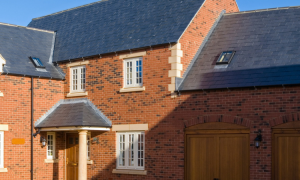It should be full steam ahead for the housing market right now with most economic indicators trending vigorously upwards.
Not only are more Americans going back to work — net monthly job gains averaged more than 200,000 this year, according to the Bureau of Labor Statistics — but pay checks are finally expanding again. Median household income grew by more than 5% in 2015, according to the Census Bureau, and gains have continued in 2016. The national unemployment rate stands below 5%.
Plus, mortgage financing costs continue to scrape bottom: In August, the average borrower of a 30-year, fixed-rate loan received an interest rate of about 3.45%.
“Healthy labor markets in most the country should be creating a sustained demand for home purchases,” said Lawrence Yun, chief economist for the National Association of Realtors (NAR).
However, Yun said that a lack of supply has caused sales to inch backward after peaking in June.
Many local real estate brokers simply do not have the inventory to satisfy demand. That not only makes it harder to find a home to buy, it drives up the prices of houses that do come on the market.
Still, even though sales have declined month-over-month to an annual rate of 5.33 million, down 0.9% from July, year-over-year sales rose by 0.8%.
Home builders expect conditions to improve
Home builders have noted the shortage of available listings and the burgeoning demand for them, and they have grown optimistic about their prospects for selling more new homes going forward. The builder’s confidence index compiled by their national association spiked to 65 this month, up from 59 in August. That means more builders expect conditions to improve this year than those who do not.
They too face, however, difficulties in acquiring plots of land to build on, especially in some of the most expensive metro areas in the country. Many of these places have few large plots left suitable for development and increasingly complex regulations add another layer of hassle and expense for builders, making it more difficult for them to respond quickly to inventory shortages.
Home prices reflect the inventory problems with the national median for homes sold in August coming in at $240,200, up 5.1% compared with 12 months earlier. The market has recorded 54 consecutive year-over-year price gains.
The biggest shortfalls tend to be with affordable starter homes in many markets, which are reflected in the share of homes sold to first-time buyers. They accounted for just 31% of sales in August, well below historical norms of about 40%. The lack of inventory for families just starting out is a big problem.
Affordable homes going fast
Once listings hit the market, they do not linger long. The median time on market dropped to 36 days in August, down from 47 in August 2015.
“New listings at affordable prices are receiving multiple offers and going under contract almost immediately upon becoming available,” said Tom Salomone, NAR’s president and a real estate broker in Coral Springs, Fla.
In the hottest markets, such as the Bay Area in California, listings were sold in a median of 33 days, despite some of the highest home prices in the nation.
Regionally, the South recorded the weakest month, with sales off 2.7% compared with July. The Northeast reported strong month-over-month gains, up 6.1%. Midwest sales fell slightly and in the West, 1.7% fewer homes got sold.
Here are the year-over-year sales changes by region:
| Region | Home sales | % Sales change year-over-year | Median home price | % Price change year-over-year |
| Northeast | 660,000 | -5.7% | $284,000 | 3.3% |
| Midwest | 1.28 million | 0% | $194,000 | 5.0% |
| South | 2.22 million | -1.8% | $214,500 | 6.6% |
| West | 1.23 million | -0.8% | $346,100 | 6.4% |
Source: National Association of Realtors






